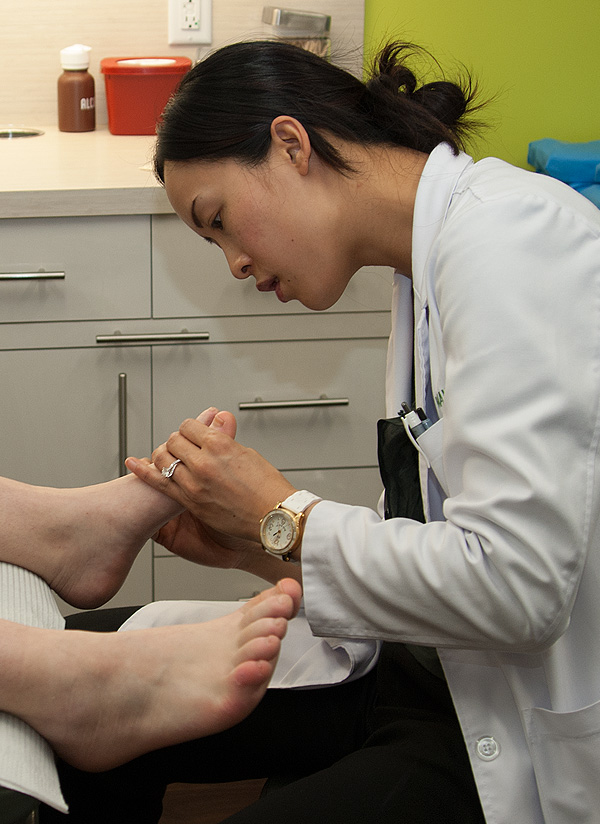Corns and Calluses are thickenings of skin in areas that have increase pressure or friction such as repeated rubbing from shoes. Corns form on the toes while calluses are found on the soles of your feet. Mild degree of calluses on feet are normal. It is okay to soak your feet in warm water and using a lanolin or urea based lotion may soften them. After a warm bath or shower, you may also use a pumice stone to gently file down the calluses.

Excessive calluses on the soles are not normal. Usually they can become quite painful with weight-bearing and activity. This is an indication that there is abnormal weight distribution to your feet which can be due to faulty alignment, excessive motion, or a deformity found in the feet or lower extremity and should be evaluated by a doctor who specializes in this area.
What You Should Avoid
- Using over the counter medication to dissolve corns. This often leads to maceration of surrounding skin which can cause further skin breakdown and possible infection.
- Trimming the calluses or corns with a sharp object to avoid infection
- If you have diabetes, peripheral vascular disease (poor circulation), impaired vision, or if you are immune-compromised, you should avoid trimming your corns and calluses which can lead to infection.
Doctor’s Care
A foot doctor will not only treat painful corns and calluses by trimming them, he/she can evaluate for the cause of thickened skin. Padding or orthotic inserts may be recommended to eliminate pressure areas and re-distribute weight more even across your feet. If there is a deformity that is causing a corn or callus such as hammertoes, the doctor will make recommendations to treat this problem.

Dr. Alice Wang performing a foot exam.
If you are a diabetic, you should see a foot doctor routinely to check for corns and calluses. If untreated, ulcerations may form as a result of excessive calluses and pressure, possibly leading to infection and limb loss.

